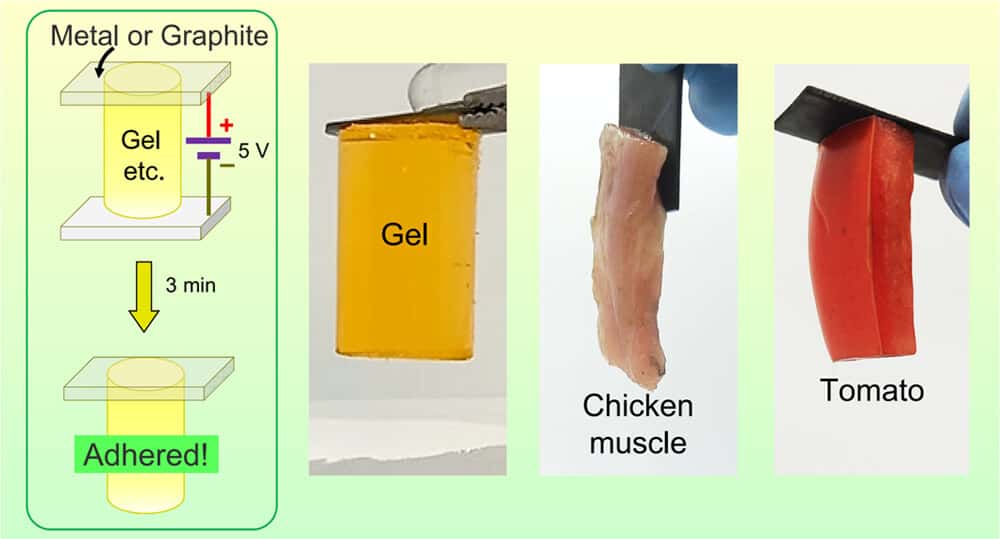
Researchers at the University of Maryland have devised a novel method of binding materials together without the need for traditional adhesives. Rather than glue, this technique harnesses the power of electricity. By applying a small voltage, the researchers showed it’s possible to securely join hard and soft objects together. This non-stick method has the added advantage of being completely reversible. By reversing the direction of the electron flow, the two objects are easily and immediately separated.
Don’t throw away your superglue just yet though. This method is meant for niche applications, including biohybrid robots, enhanced biomedical implants, and cutting-edge battery technologies. Here’s how it all works.
The Power of Electroadhesion
The new method leverages a fascinating phenomenon called electroadhesion (EA), or the Johnsen–Rahbek effect. In the 1920s, two Danish engineers, Frederik Alfred Johnsen and Knud Rahbek noticed that when a special kind of porous material was placed between two metal plates and a significant electrical voltage was applied, the material would stick to one of the plates.
This voltage causes the materials to stick together due to a process known as polarization. In simpler terms, the molecules within these materials rearrange in such a way that they create a force that pulls the two surfaces together.
This phenomenon is not limited to specific types of surfaces and can occur with conductors, semiconductors, and even insulators. The strength of the adhesive force can vary based on whether the material behaves more like an insulator or a conductor, leading to different types of forces being involved.
Electroadhesion technology has evolved significantly since its discovery, with recent advances showing that up to 33 different factors can affect how well materials stick together using this method. So, while electroadhesion offers exciting possibilities, it also requires careful control to achieve the desired results.
A spark of adhesion
The new demonstration from the University of Maryland is just one of many exciting applications. Previously, chemist Srinivasa Raghavan and colleagues used electroadhesion to bind soft, oppositely charged materials together. Now, this recent study takes this a step further by successfully binding hard materials like graphite to soft ones, such as animal tissue.

In a series of experiments to test the limits of electroadhesion, the researchers applied a mere 5 volts to a setup involving graphite electrodes and an acrylamide gel. They observed the gel forming a permanent chemical bond with the positively charged electrode. The bond was so strong that attempting to separate the two resulted in the gel tearing. Remarkably, reversing the direction of the current allowed for an easy separation of the materials. The procedure worked with graphite sticking to chicken muscle or tomato tissue too.
“The adhesion strength increases with increasing voltage, time in the field, and the ionic conductivity of the gel. The ultimate adhesion strength is limited only by the strength of the gel,” the researchers wrote.
Further experimentation revealed that for electroadhesion to occur, the hard material must be able to conduct electrons, while the soft material must contain salt ions. This criterion explains why certain fruits with high sugar content, such as grapes, failed to adhere under some conditions. Additionally, the team discovered that electroadhesion could take place entirely underwater, broadening its applicability and setting the stage for innovations in various fields.
The authors claim this demonstration could lead to a suite of exciting applications from new batteries to the advancement of biohybrid robotics and biomedical implants.
The findings appeared in the journal ACS Nano.


